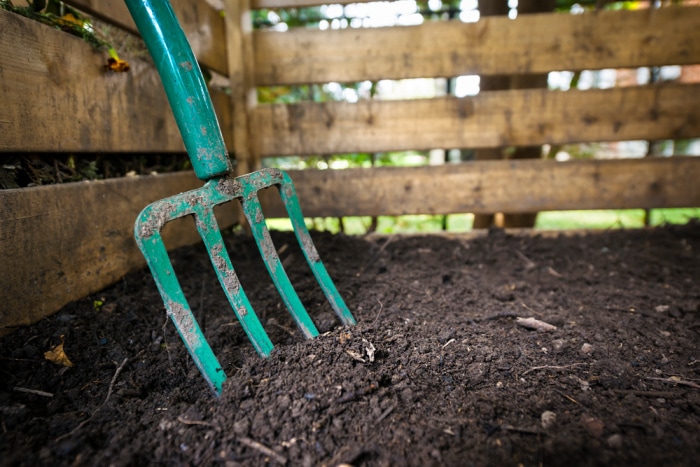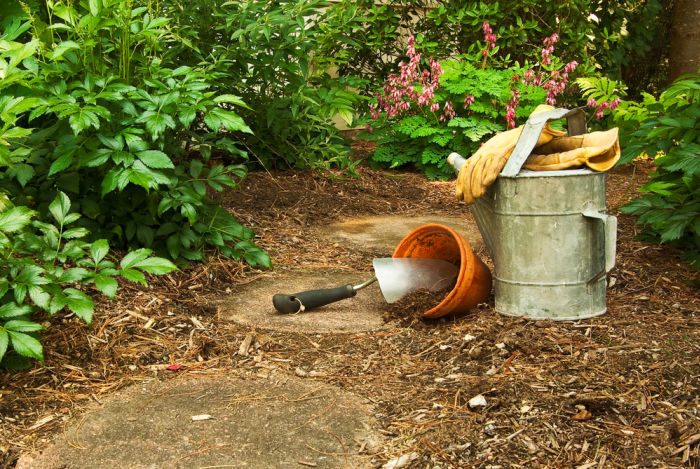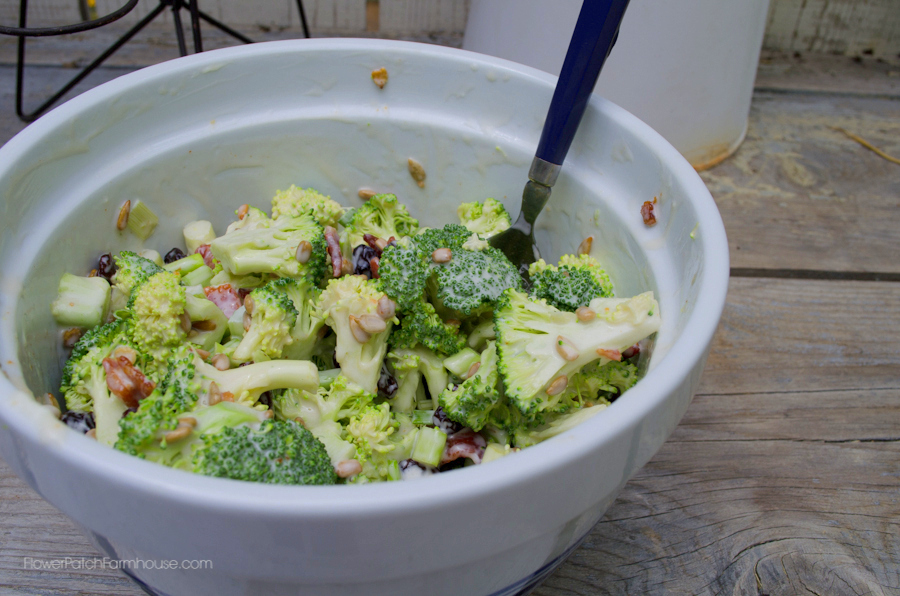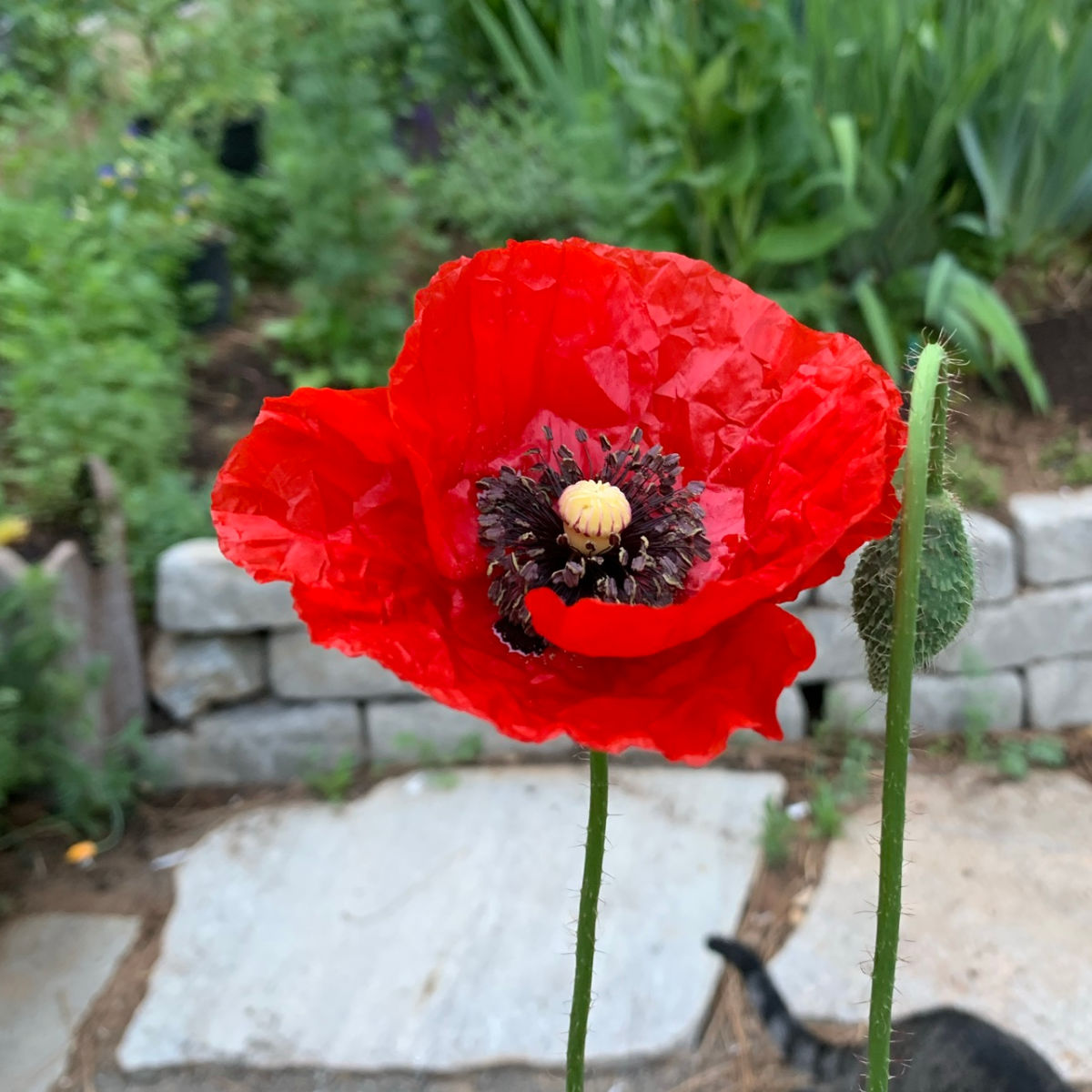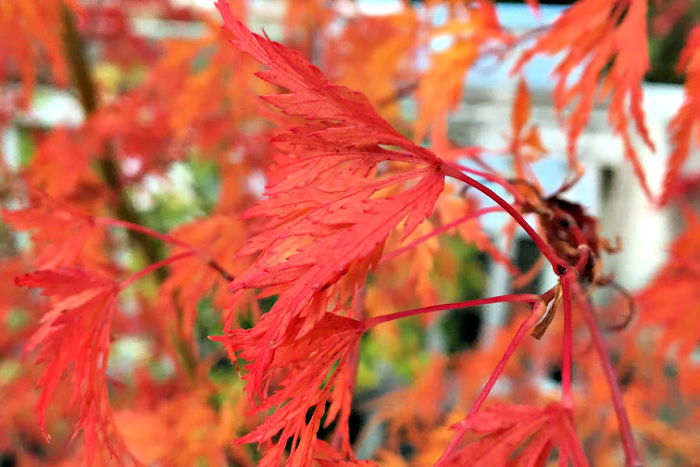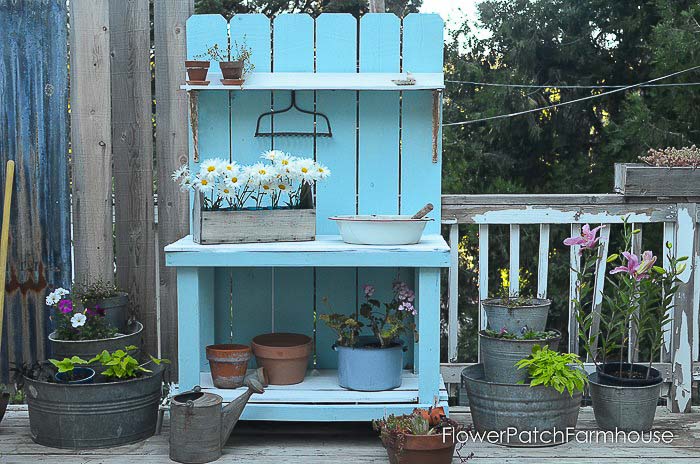How Hard is it to Grow Bamboo: Beginner’s Guide to Growing Bamboo
Bamboo is a versatile and fast-growing plant that can add a touch of elegance and a tropical vibe to any garden or landscape.
Whether you’re a seasoned gardener or a complete beginner, this guide will provide you with the essential steps to successfully grow bamboo in your own space. From choosing the right variety to maintaining healthy growth, we’ve got you covered.
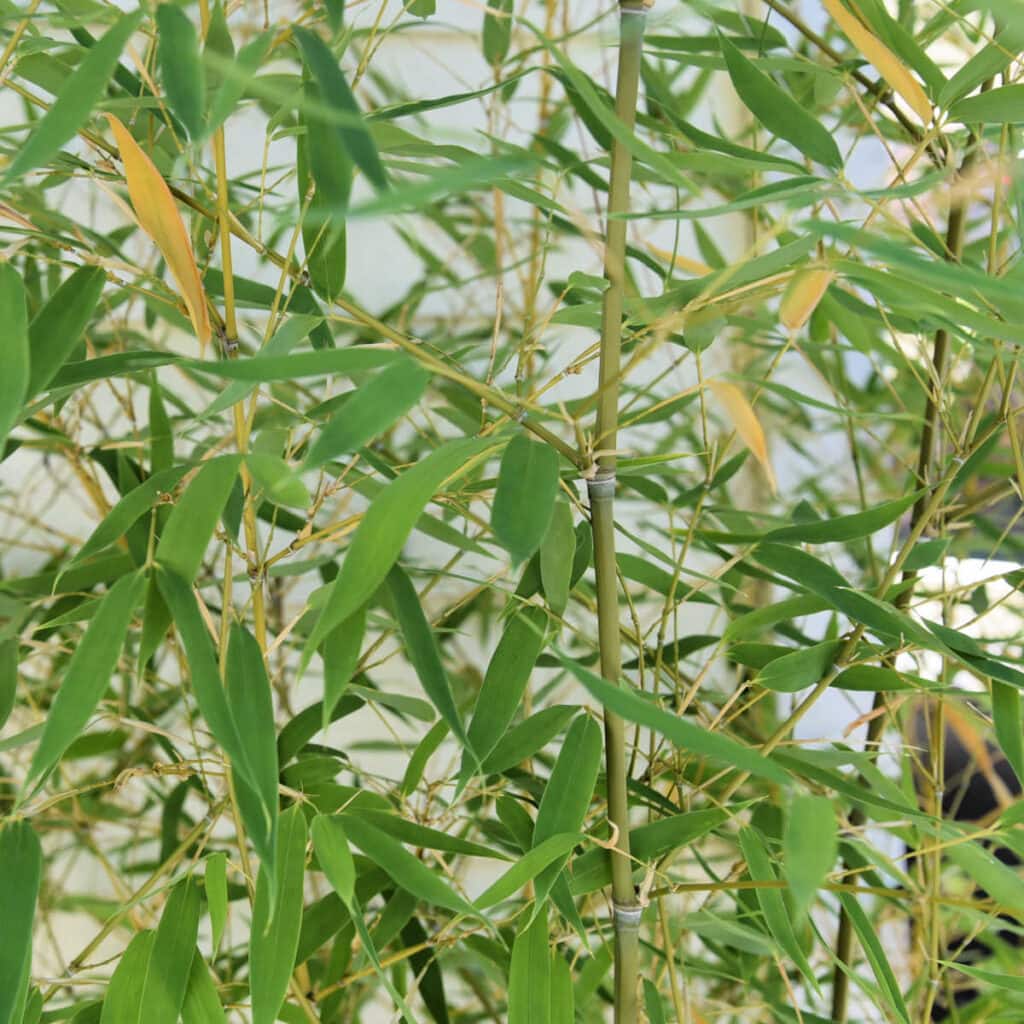
How Hard is it to Grow Bamboo?
Different types of bamboo species grow at different rates and require varied conditions. Some can withstand lower winter temperatures than others.
Some grow big and fast, while other smaller bamboos grow at a more sedate rate. So if you choose the right bamboo for your growing conditions it really is very easy.
But there are some caveats you need to be aware of!
Table of Contents
- Selecting the Right Bamboo Plants
- Choosing an Ideal Location
- Preparing the Soil
- Planting Bamboo: Step-by-Step
- Watering and Maintenance
- Pruning and Containment
- Dealing with Common Bamboo Issues
- Harvesting Bamboo
- Conclusion
Why Grow Bamboo?
Bamboo is a fabulous plant that grows quickly and can create a privacy screen in your garden while creating a lovely tropical vibe.
The beautiful strappy bamboo leaves rustle gently in the wind and can even buffer strong winds.
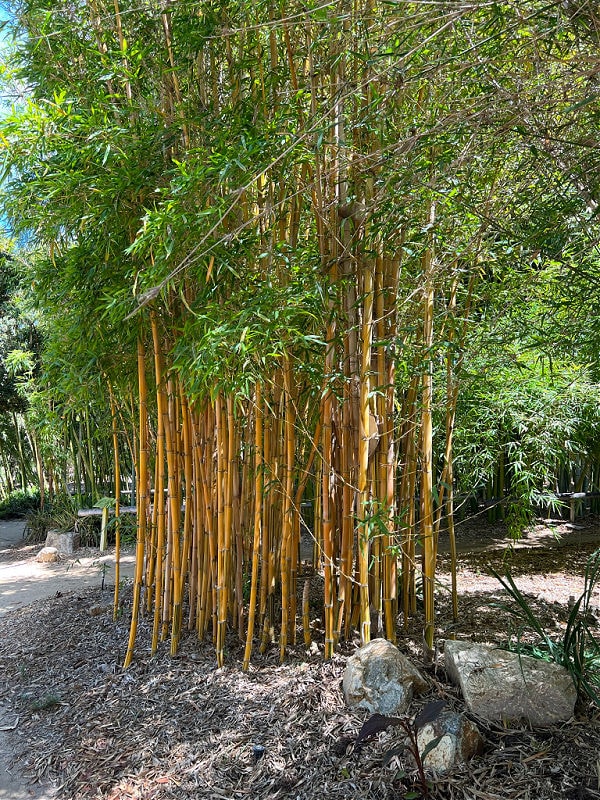
Selecting the Right Bamboo Variety
Not all bamboo is created equal. Some species of bamboo are better suited for specific climates and environments.
Before planting, research which bamboo varieties thrive in your region. Clumping bamboo, for instance, is ideal for smaller spaces and tends to be less invasive than running bamboo.
Running bamboo spreads and produces new shoots by underground rhizomes.
Running bamboo can become problematic and should be grown with a barrier to prevent it from spreading, especially under fences where it will invade your neighbor’s property.
Choosing an Ideal Location
Bamboo can grow in a variety of light conditions, but most prefer full sun to partial shade. Consider the space you have available and the amount of sunlight it receives throughout the day.
Additionally, be mindful of proximity to buildings or other plants, as bamboo can spread rapidly. This is not as much of a problem if you plant in a container or with a barrier as suggested before.
All the best garden tips
Grow Bamboo in Pots
I love the relaxed tropical look that bamboo brings to my back deck and in my garden. It grows fast and makes a great privacy screen. But because it can become a problem in the garden, I grow bamboo in pots.
Preparing the Soil
Bamboo needs to be planted in well-drained soil to thrive. Incorporate organic matter like compost or well-rotted manure into the soil to improve its texture and fertility.
Though many claim they are picky about soil types I have not found that to be an issue and have even seen them growing in poor soil.
Good drainage is the key with the soil for bamboos.
Planting Bamboo: Step-by-Step
Digging the Hole
Ensure the hole is at least twice as wide as the root ball and slightly deeper.
I really don’t worry about this advice as my soil has been amended for decades and is loose and friable so the roots have no problem getting going.
Adding Compost
Mix in compost or well-rotted manure to enrich the soil. This helps with drainage and moisture retention.
If you have been amending your soil before now you may not need to do this step, but it can’t hurt.
Easy Composting
Compost makes great soil. Great soil makes growing anything so much easier.
Placing the Bamboo
Gently remove the bamboo from its container and place it in the hole, ensuring the soil level matches that of the surrounding area.
My one go to trick for helping plants to endure the transplant process is to soak the roots in an organic growth stimulant. I have seen amazing results with just one extra step.
Read all about it here: Organic REV and what it does.
Fill the hole, tamping down the loose soil gently as you go. Give the newly planted bamboo a thorough watering.
Watering and Maintenance
Watering
Bamboo requires regular watering, especially during dry spells. Ensure the soil stays consistently moist but not waterlogged.
If in containers or pots do not let them stand in water for long. If some water flows through to a catch tray then make sure any extra water is absorbed by the bamboo after half an hour. If it hasn’t then it is a good idea to drain it off.
Mulching
Apply a layer of organic mulch around the base of the bamboo to help retain soil moisture.
15+ Garden Mulches
Boost Your Plant Growth and Beautify Your Garden
Fertilizing
Remember bamboo is a grass. Grass typically like a high nitrogen feed in spring and and again during the summer when it is actively growing.
Adding a 2 inch layer of compost in spring and summer is usually sufficient as it releases its nutrients slowly.
I also like using this liquid organic fertilizer on my bamboo: Agrothrive General Purpose Liquid Fertilizer (affiliate link) I use it on all my plants so it is a great all-purpose product.
My trick is to use it weekly weakly, I dilute the recommended strength to 1/4 and water with it weekly.
Pruning and Containment
Regular pruning is essential to keep bamboo in check. Trim away any dead or damaged canes and thin out older canes to encourage new growth.
To contain the spread of running bamboo rhizomes, consider installing a root barrier. Another option is to keep it in a large container or pot. (I have several in large containers and this keeps them in check)
Remember, bamboo is considered the fastest-growing plant on this planet and you don’t want the underground stems to cross the property line into your neighbor’s yard!
When I prune or thin out older canes I save them as support stakes in my garden.
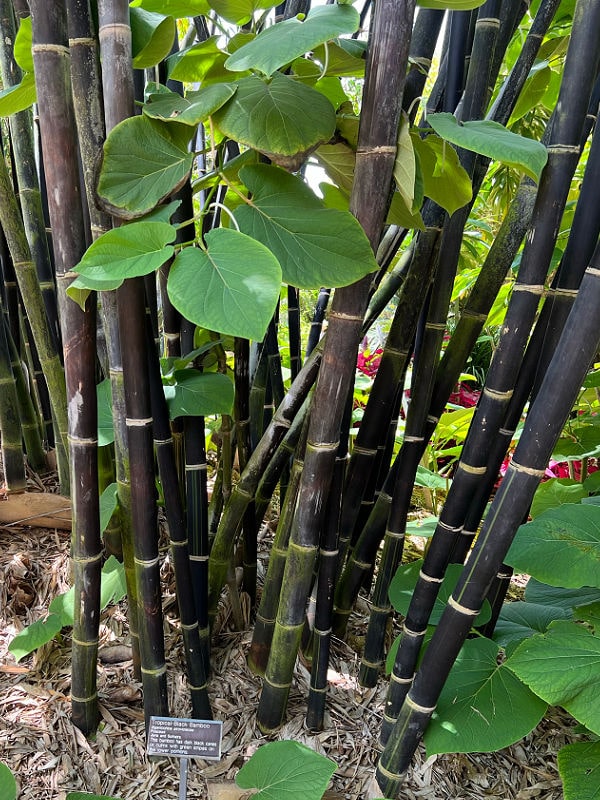
Dealing with Common Bamboo Issues
Pests
Aphids and spider mites can occasionally be a problem during the growing season. Blast them off with a strong spray of water or use beneficial insects.
Last year I tried a subscription of beneficial insects from Heirloom Roses and they seemed to work very well. They sent me a packet of different beneficial insects in little containers to hang about the gardens 3 times during the summer.
Press here to get all the details.
Diseases
Bamboo is generally hardy, but fungal diseases can occur in overly damp conditions. Ensure proper drainage and air circulation.
Harvesting Bamboo
If you’re growing bamboo for its culms (bamboo stalks), wait until they are mature, typically three to five years after planting.
Harvest them from mature plants during the dry season and use a saw to make clean cuts. I use sharp loppers to prune out old culms to use as plant stakes and let the new culms fill in. I find the best time for this is early spring.
But I actually do it throughout the summer as I need stakes. I have several bamboos to choose from.
Dividing Bamboo
It is easy to get new plants by root division.
I typically grow bamboo in pots to make sure I keep it contained. When it becomes root-bound we remove it from the pot and sever the bamboo roots into several sections.
You can learn about it all here in a post and a video!
All the best garden tips
Dividing Bamboo – step by step
Propagating bamboo is super simple and you get more for free!
Soon the division sends out new canes and new leaves. I love it when I get a new bamboo for free!
Types of bamboo include
Black bamboo – phyllostachys nigra
Golden bamboo – phyllostachys aurea
Chocolate bamboo – Borinda fungosa
Striped Bamboo ‘Alponse Karr’ – Bambusa multiplex ‘Alphonse Karr’
note: lucky bamboo plant is not a true bamboo but is really Dracaena sanderiana, a species of plant in the family Asparagaceae family
Conclusion
So, how hard is it to grow bamboo? Growing bamboo can be a simple yet rewarding experience for gardeners of all levels. By following these steps, you’ll be well on your way to cultivating a lush and thriving bamboo grove in your own backyard.
Remember, the right choices make growing bamboo easier, and with proper care, your bamboo will flourish for years to come. Happy gardening!
